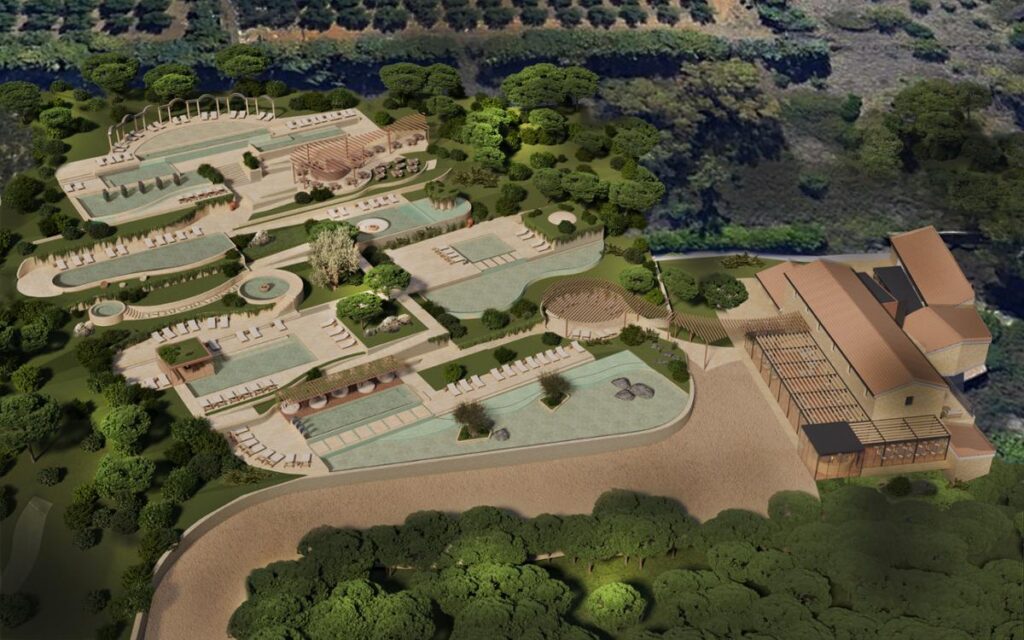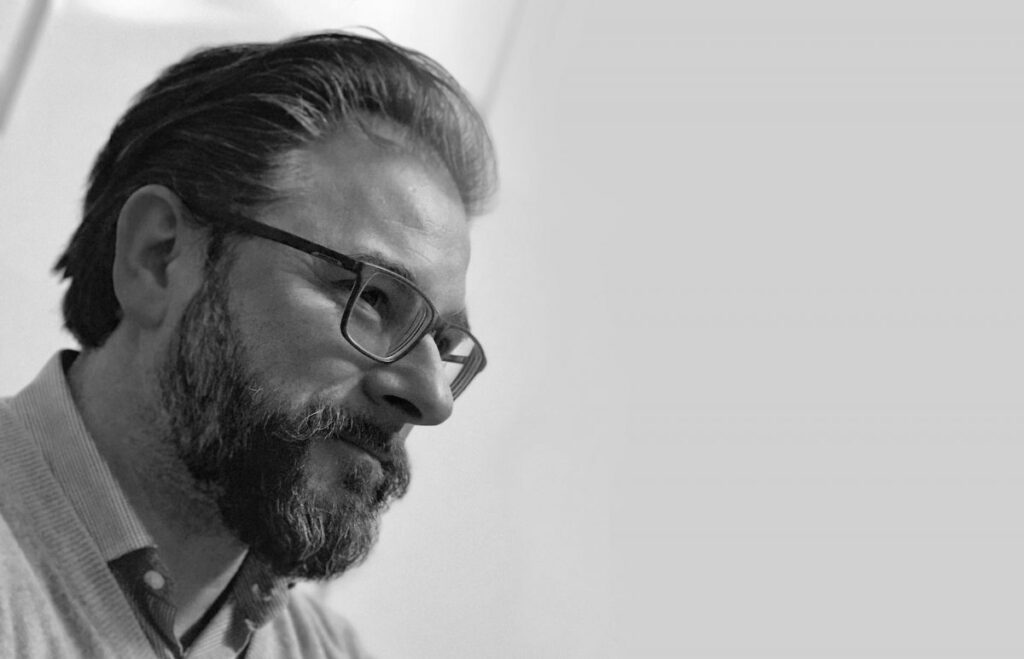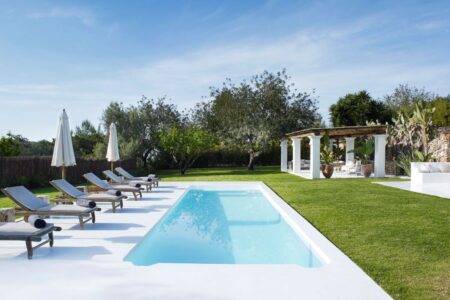Italy recaptures the splendour of its thermal heritage with the creation of the New Thermal Park in Civitavecchia, a 26,000 sqm complex designed by Studio Apostoli next to the ruins of the historic Roman site Terme Taurine. The project aims to revitalise the Lazio region and to position itself as a benchmark for the international wellness tourismThe port of Civitavecchia, which receives more than 3.5 million visitors per year, is strategically located.
The complex will have a total of 14 pools fed by natural thermal springswith a combined surface area of 1,440 m². The thermal tour will be inspired by Roman times and divided into four themed areas. The first one, Mare Nostrumwill be located in the historic structure Casale dei Bagni and will feature 32°C pools, ornamental fountains and a leisure area scenically illuminated at night. In the Eastern ProvincesIn the spa, visitors will find pools of different temperatures and salinity, hammams and relaxation areas inspired by the Oracle of Delphi. The area of the Great North will be dedicated to contrast therapy, with a Kneipp circuit, a panoramic Finnish sauna and cold (16°C) and hot (40°C) plunge pools. Finally, Imperial Rome will pay homage to Roman grandeur with thermal and non-thermal pools, multi-level waterfalls and a lounge bar.

The design of the park is centred on the sustainability. To minimise environmental impact, prefabricated modules, advanced rainwater harvesting systems and low-visibility solar panels will be used. In addition, more than 500 indigenous Mediterranean trees and neutral-toned materials shall be used so as not to interfere with the migratory routes of birds.

The architect Alberto ApostoliThe founder of Studio Apostoli explains that the project "was conceived as a space for relaxation and historical contemplation, capable of reinterpreting Roman thermal culture for the contemporary era". He adds: "Together with the Sensi family we have developed a plan that synthesises all the necessary elements, projecting the future of wellness tourism without losing the connection with the memory of the territory. Throughout the process, the United Nations Sustainable Development Goals - defined in the 2030 Agenda - have been our guide".
The New Thermal Park It thus represents both a continuity of the Roman legacy and an innovative commitment to the future of wellness, offering visitors the opportunity to relive the ancient culture of bathing in a setting designed for the 21st century.






